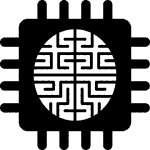Electrical and Computer Engineering, Department of

Department of Electrical and Computer Engineering: Faculty Publications
Document Type
Article
Date of this Version
2-26-1997
Citation
1997 Society of Photo-Optical Instrumentation Engineers
Abstract
For many reasons smaller spacecraft are becoming more appealing. Because of their lower inertias, these spacecraft are more sensitive to disturbances and likely to have more attitude jitter than the larger units. These jitter levels are unacceptable for some scientific instruments and need to be compensated. In the case of line-of-sight type instruments, the attitude jitter can be mitigated by incorporating a fast steering mirror into the system. To take full advantage of these devices, the spacecraft attitude must be measured at sufficiently high bandwidth, well beyond what is commonly provided by inertial reference units. Various ways to obtain higher bandwidth attitude measurements for the purpose of jitter control are explored and a practical solution to the problem is proposed.


Comments
Opt. Eng. 36(7) 2092–2100 (July 1997)